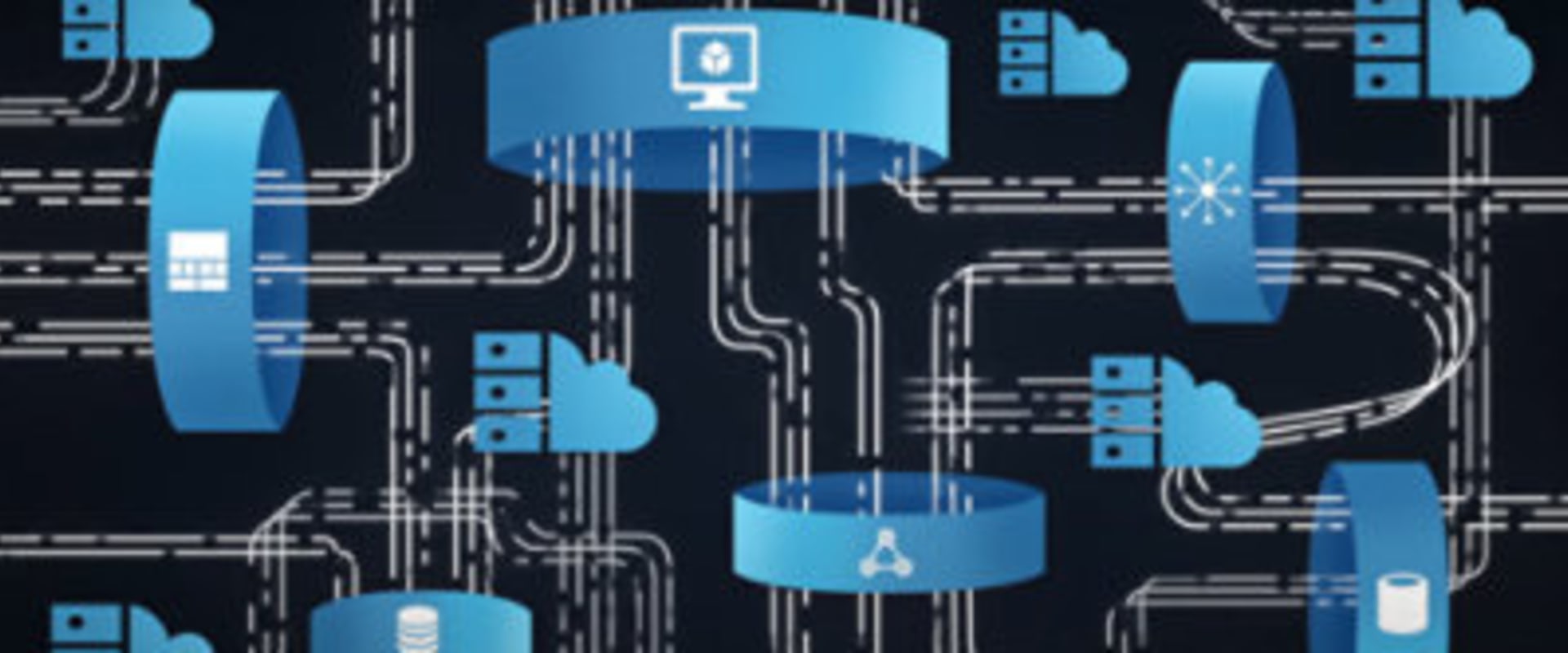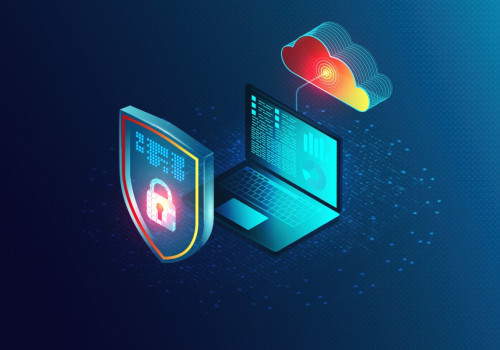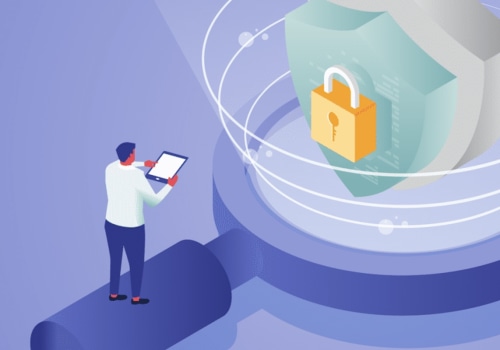As businesses look for better ways to manage their network infrastructure and ensure the smooth running of their operations, network monitoring solutions have emerged as a powerful tool for businesses of all sizes. Network monitoring solutions can help businesses identify potential problems before they affect operations, ensure the security of their networks, and reduce downtime. In this article, we'll explore the different types of network monitoring solutions available and discuss how they can be used to maximize the efficiency of a business's network.
Network monitoring solutions
are an essential tool for businesses to ensure their technical support and technology solutions are compliant with HIPAA regulations. These solutions provide visibility into network performance, activity, and security threats.By monitoring the network, businesses can identify potential issues before they become a problem and protect against malicious attacks. There are a variety of network monitoring solutions available, each with their own benefits. For example, some solutions provide real-time monitoring and alerting of events, while others allow organizations to capture and analyze data over a period of time. Additionally, some solutions are designed to be deployed on-premise while others are cloud-based.
The key benefit of network monitoring solutions is improved visibility into network performance and activity. This visibility helps organizations identify potential issues quickly, resulting in faster problem resolution and fewer disruptions to business operations. Additionally, network monitoring solutions help ensure HIPAA compliance by providing an audit trail of all activities that occur on the network. When choosing a network monitoring solution, organizations should consider the size and complexity of their network, as well as the type of data they need to monitor.
Additionally, organizations should look for solutions that provide comprehensive reporting and analytics capabilities. This will ensure that organizations have the information they need to troubleshoot problems and make informed decisions about their network performance. Organizations should also consider how they plan to use the network monitoring solution. For example, if they need to monitor data in real-time, they should look for a solution that provides real-time alerting and notifications.
Alternatively, if they need to capture and analyze data over a period of time, they should look for a solution that provides reporting and analytics capabilities. Finally, organizations should consider any potential challenges associated with network monitoring solutions. For example, some solutions may be difficult to configure or require specialized expertise to use effectively. Additionally, some solutions may be more costly than others.
Organizations should evaluate these challenges carefully before selecting a solution. In addition to providing visibility into network performance and activity, network monitoring solutions can also help protect against cyber threats and keep data secure. By providing insight into suspicious activity on the network, these solutions can help identify malicious actors before they have a chance to compromise the system or steal sensitive data. Additionally, by monitoring activity over time, organizations can detect patterns in user behavior that may indicate malicious intent. When using a network monitoring solution, organizations should ensure that it is properly configured and used correctly.
This includes setting up alerts for suspicious activity and regularly reviewing reports to identify potential security threats. Additionally, organizations should ensure that all users are aware of the policies and procedures related to network monitoring and comply with them at all times. Overall, network monitoring solutions are an essential tool for businesses to ensure their technical support and technology solutions are compliant with HIPAA regulations. By using these solutions properly, businesses can identify potential issues quickly, protect against malicious attacks, and keep data secure.
Benefits of Network Monitoring Solutions
Network monitoring solutions can provide a number of valuable benefits, such as improved visibility into your network, faster troubleshooting, and better security.This improved visibility can allow you to quickly identify and address any potential issues in the network, enabling you to maintain HIPAA compliance more efficiently. With faster troubleshooting, your team can quickly identify and address any issues that arise, reducing the amount of downtime and ensuring that your business remains compliant. Finally, better security helps protect your sensitive data from unauthorized access or malicious actors. These benefits can help ensure that your technical support and technology solutions are compliant with HIPAA regulations. By providing improved visibility into your network and faster troubleshooting, you can quickly identify and address any potential issues and maintain compliance with HIPAA.
With better security, you can protect your sensitive data from unauthorized access or malicious actors. Overall, network monitoring solutions can help ensure that your business remains compliant with HIPAA regulations.
Types of Network Monitoring Solutions
Network monitoring solutions are an essential tool for helping businesses stay compliant with HIPAA regulations. There are a variety of different types of network monitoring solutions available, each with their own advantages and disadvantages. In this section, we will explore the different types of network monitoring solutions and provide examples of popular solutions in each category. Software-based solutions are the most common type of network monitoring solution.These solutions use software installed on a server or device to monitor the activity on the network. Popular software-based solutions include SolarWinds Network Performance Monitor, WhatsUp Gold, and NetIQ Network Monitor. Hardware-based solutions involve the use of hardware devices that are connected directly to the network. These devices can be used to monitor the entire network or just specific parts of it. Popular hardware-based solutions include Cisco Meraki, HPE Aruba, and Ubiquiti UniFi. Cloud-based solutions are hosted in the cloud and provide a more comprehensive view of the entire network.
These solutions can be used to monitor traffic from multiple locations in real time. Popular cloud-based solutions include Splunk Cloud, Datadog, and LogicMonitor.
Protecting Against Cyber Threats
Network monitoring solutions can help protect businesses from cyber threats by providing early detection of suspicious activity and blocking malicious traffic. Advanced monitoring solutions offer more comprehensive protection by scanning for threats, detecting unusual activity, and alerting administrators when needed. These solutions are designed to detect any potential security breaches and reduce the risk of data loss or theft. They can monitor network traffic and identify malicious activities, such as malware downloads, phishing attempts, or brute force attacks.The monitoring system can then block these malicious activities and alert administrators so they can take appropriate action. Network monitoring solutions can also help protect against data breaches by providing visibility into the types of data that is being transferred across the network. This visibility allows administrators to ensure that sensitive data is only shared with authorized personnel. In addition, the monitoring system can detect any unauthorized access attempts, thus helping to protect against unauthorized data access and use. By utilizing network monitoring solutions, businesses can ensure that their technical support and technology solutions are compliant with HIPAA regulations. With the help of these solutions, businesses can stay protected against cyber threats, maintain compliance, and ensure the security of their data.
Choosing the Right Solution
When it comes to finding the right network monitoring solution for your business, there are a few key factors to consider.Cost, scalability, complexity, and features are all important considerations when selecting the right solution for your needs. Understanding your specific requirements and assessing the options available can help you make an informed decision. The cost of network monitoring solutions can vary depending on the scope of the system, its complexity, and the features it offers. While some solutions may offer a lower upfront cost, they may not provide the scalability or features needed to ensure compliance with HIPAA regulations. It is important to consider both long-term costs and features to determine which solution is the most cost-effective. Scalability is another factor to consider when selecting a network monitoring solution.
A scalable solution should be able to grow with your business, providing increased flexibility and control over your security and compliance posture. Additionally, the complexity of the system should be taken into account. If a solution is too complex, it can be difficult to manage and maintain in the long run. The features offered by a network monitoring solution are also important. Look for solutions that include intrusion detection and prevention capabilities, as well as vulnerability management tools.
Additionally, you should consider solutions that offer real-time analytics and reporting capabilities for compliance purposes. When assessing your needs for a network monitoring solution, it is important to consider both short-term and long-term goals. Consider how quickly you need to implement a solution and what features are necessary for compliance. Additionally, consider the scalability of the solution and the level of complexity required for successful implementation. By understanding your specific needs and assessing the options available, you can select the best network monitoring solution for your business. Doing so will help ensure that your business meets HIPAA regulations and provides the technical support and technology solutions needed for success.
Setting Up and Using a Network Monitoring Solution
Setting Up a Network Monitoring SolutionWhen setting up a network monitoring solution, it's important to properly configure the system to ensure that it is able to effectively monitor your network.The first step is to decide which type of monitoring solution to use. This will depend on the size of your network and the complexity of your system. If you have a large network with complex configurations, you may want to consider using a more advanced monitoring solution. Once you have chosen a solution, you will need to configure it properly.
This typically involves setting up the system to detect certain events and send out notifications when those events are detected. It is also important to set up alerts and notifications so that you can be alerted when certain conditions are met. Additionally, you may want to configure the system to generate reports so that you can track any changes that occur in your network. Once your network monitoring solution is properly configured, you will be able to start using it. This typically involves setting up thresholds and alerts that will trigger when certain conditions are met.
Additionally, you may want to set up reports so that you can track changes over time.
Optimizing Performance and Troubleshooting Common Issues
Once your network monitoring solution is set up and running, it's important to keep an eye on its performance to ensure that it is running optimally. If there are any issues, it's important to address them quickly to ensure that your network remains secure and stable. Additionally, it's important to monitor your system for any potential threats or security breaches.If there are any issues with your system, it's important to troubleshoot them quickly and efficiently. Common issues include latency, packet loss, and dropped connections. Additionally, you may want to check for any configuration errors or misconfigurations that could be impacting the performance of your system. Finally, it's important to regularly update your network monitoring solution so that it is always up-to-date with the latest security patches and features. This will help ensure that your system is always secure and running at its best. Network monitoring solutions are an essential tool for businesses that need to ensure their technical support and technology solutions are compliant with HIPAA regulations.
They offer numerous benefits, such as improved visibility into networks, streamlined troubleshooting processes, and protection against cyber threats. When selecting a solution, factors such as cost, scalability, complexity, and features should be taken into consideration. With the right network monitoring solution in place, businesses can ensure their networks are secure, reliable, and compliant.








Leave Message